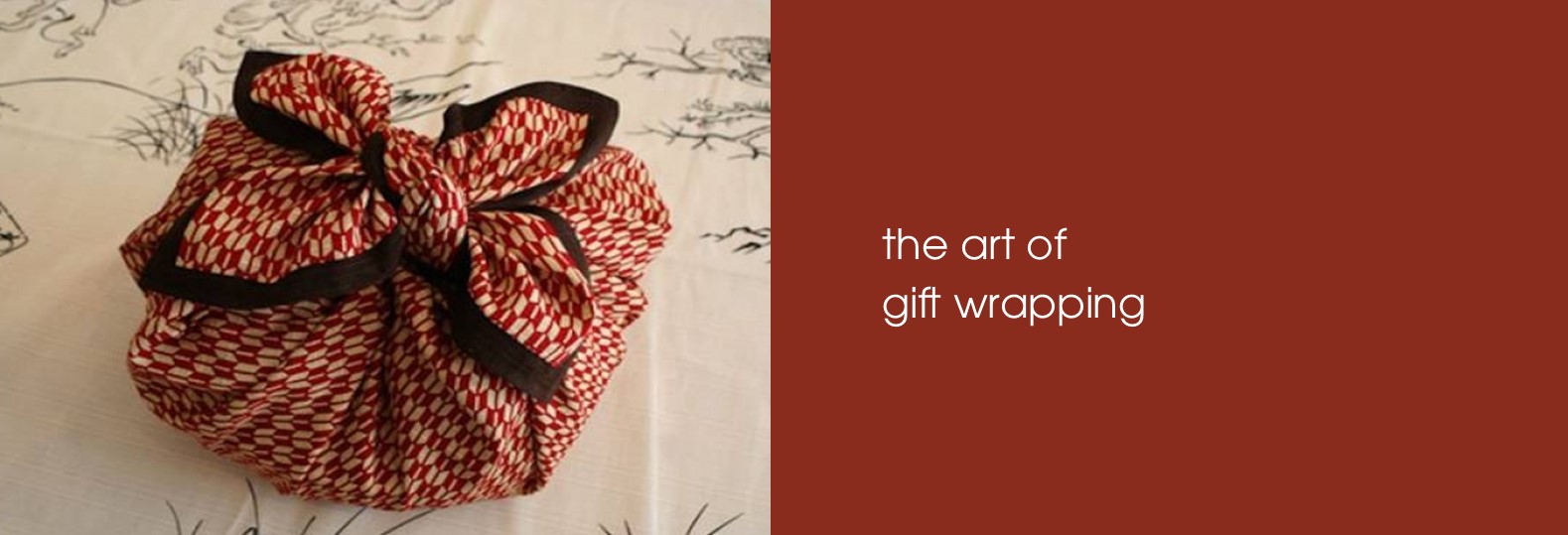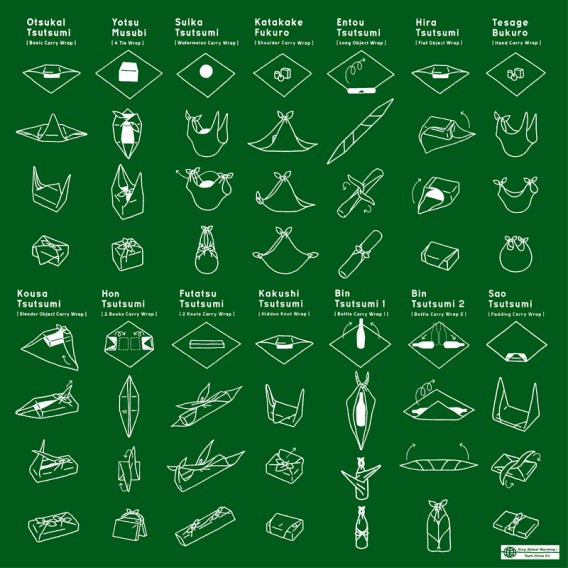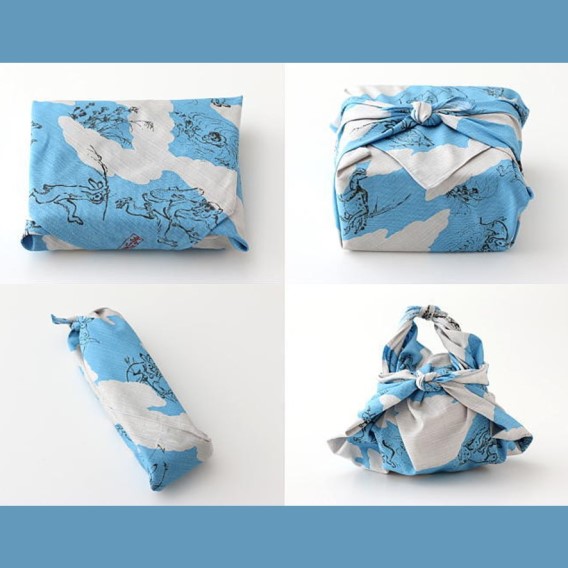Beautiful! The fascinating history of gift wrapping
Somebody you care for has bought you a present. It arrives perfectly wrapped in gorgeous fabric. Oh, wow. What’s going on? It’s Furoshiki!
When you’ve made an effort to find the perfect gift for someone, it’s lovely to put just as much thoughtfulness and care into its presentation. We thought it’d be nice to explore the history of gift wrapping, in good time for the festive season.
Stunning traditional gift wrap in Korea and Japan
In Korea they’ve used a Bojagi, a square piece of fabric, to wrap gifts since the Three Kingdoms Period, which began in 57 BC. Wander forwards through the mists of time to Japan’s Edo period, between 1603 and 1867, when the practice of Furoshiki began, also involving wrapping gifts in a reusable wrapping cloth.
Furoshiki are squares of fabric used to keep precious things safe, carry them, and wrap them. It can be a tiny scrap of exquisite fabric used to wrap something small, or a large piece used to wrap a large gift. They also make a popular alternative to a shopping bag, and to many they represent the ultimate example of Japanese minimalism, which sits at the heart of the country’s graceful, quiet aesthetic. But it’s about so much more than simply wrapping something well. Every stage of the process has beauty and meaning.
When using Furoshiki to wrap a present, the first step is to quiet your mind. As you fold and tie the material, you keep the person the gift is intended for in your mind. You focus positive loving thoughts on them, also concentrating on the gift itself and the gentle process of wrapping. No wonder presenting gifts the Japanese way sends so many people into a lovely meditative state.
So what can you wrap with Furoshiki? There are no rules. If you can wrap it in paper, you can wrap it in fabric the Japanese way. The nicest thing of all is the fact the material is re-useable. In today’s environmentally responsible world, it makes a lot of sense.
Which fabric to use? It’s personal. There are some simple Japanese guidelines around the colour of the fabric, but you don’t have to follow them.
Reds and pinks signify happiness. The Japanese wrap gifts in these colours for happy and auspicious celebrations, for example weddings and engagements. Yellow and orange shades, and anything that looks like gold, also signify happy times, and a reversible cloth featuring both of them is very happy indeed!
Green fabrics are used for funerals, and blues also reflect sad occasions. On the other hand blue is also fine for everyday use, used in Japan to wrap and carry shopping. Elegant purples are a sign of a high-ranking person in Japan but are also used to express gratitude, at funerals, and for many other occasions. And browns are thought to be classy, calm, and modest.
In the West it’s a pleasure thing, all about the aesthetic. Spend time online or in the shops finding fabric that makes you feel joyful, happy, and inspired. That spark of sheer joy informs your wrapping and enriches the process even more. No wonder Furoshiki remains an important part of the Japanese way of life.
How did the practice of gift wrapping unfold in the western world?
According to Hallmark’s History of Gift Wrap, the earliest form of wallpaper, dating back to 1509, was used to wrap presents in the western world for a short time. But it was too delicate for the job and quickly fell out of favour. In 1745 The Harleian miscellany, by William Oldys, mentioned ‘brown or wrapping paper’ being used to ‘wrap up Goods, therefore called Shop-Paper’. And in 1804 the USA’s South Main Preservation Society created the country’s first advert for Christmas gifts.
In 1843, in London, Sir Henry Cole commissioned the first ever commercial Christmas cards. During the same year A Christmas Carol, by Charles Dickens, was published, mentioning how gifts were wrapped in brown paper. When Joseph Gayetty introduced loo roll to the world in 1857, the invention of tissue paper soon followed. By 1881 Christmas stockings filled with presents were common in the UK, and the invention of the Flexography printing process in 1890 heralded the kind of mass produced, colourful, patterned gift wrap we’re used to seeing in the shops today.
The Victorians loved wrapping paper that was as colourful and vivid as their Christmas cards, smothered in blooms, cherubs, and birds, then embellished with fancy lace and ribbon. For the festive season they added Santa, robins, angels, holly and other seasonal imagery we still use. And 1912 saw cellophane being used to wrap Whitman’s candy in the USA, leading to a trend for using the material for wrapping gifts, either with or without printed wrapping paper.
Modern gift wrapping trends
In the 2020s, anything goes. There’s a strong trend for using traditional brown parcel paper for a rustic, home-crafted look. People make stunning paper poinsettias for decorating wrapped gifts, and pretty rubber stamps allow you to make your own gift wrap.
Natural elements and big, bright bows, black wrapping paper with vivid felt flowers, real berries and leaves, paper snowflakes and glitter, they’re all on-trend. And they’re all very lovely. But Furoshiki is our favourite. It sits beautifully with our own cool, calm aesthetic. It has great environmental credentials. And it’s easy to learn how to do it.
Learn Furoshiki
Bring beautiful fabrics, mindfulness and love to the wrapping process, delight the people you care for, bring a little cool Japanese style to your life, and learn a new skill – something that’s always good for the spirit and the mind. We wish you joy learning the ancient art of Furoshiki.






